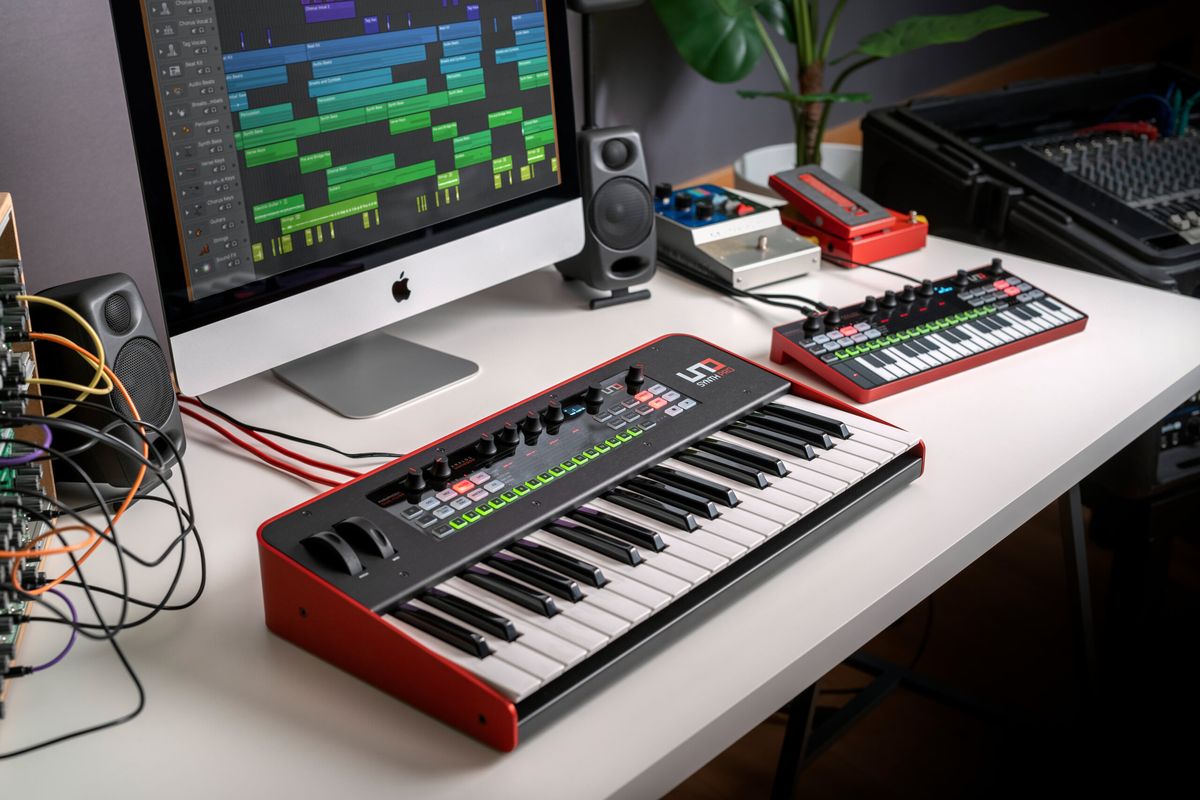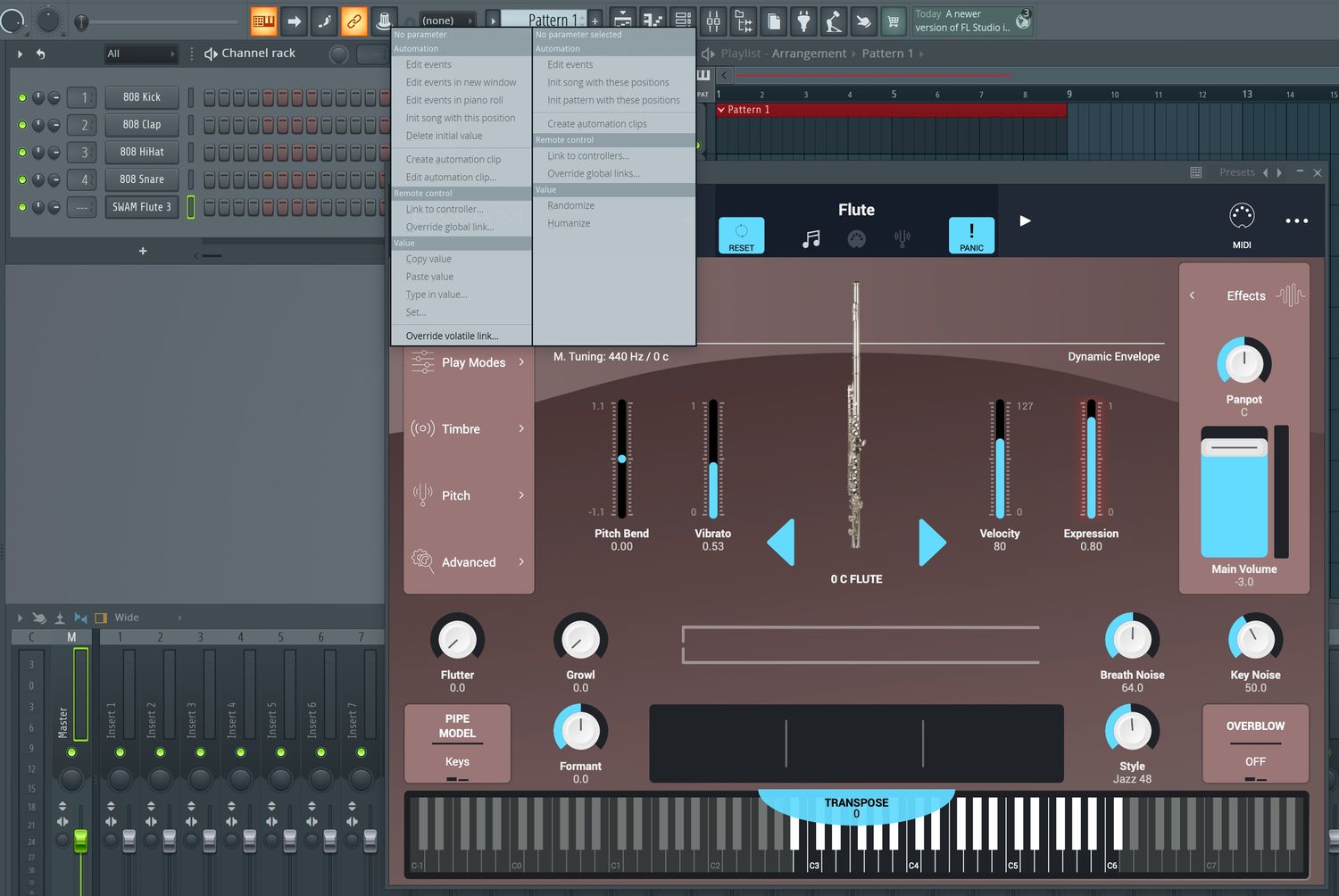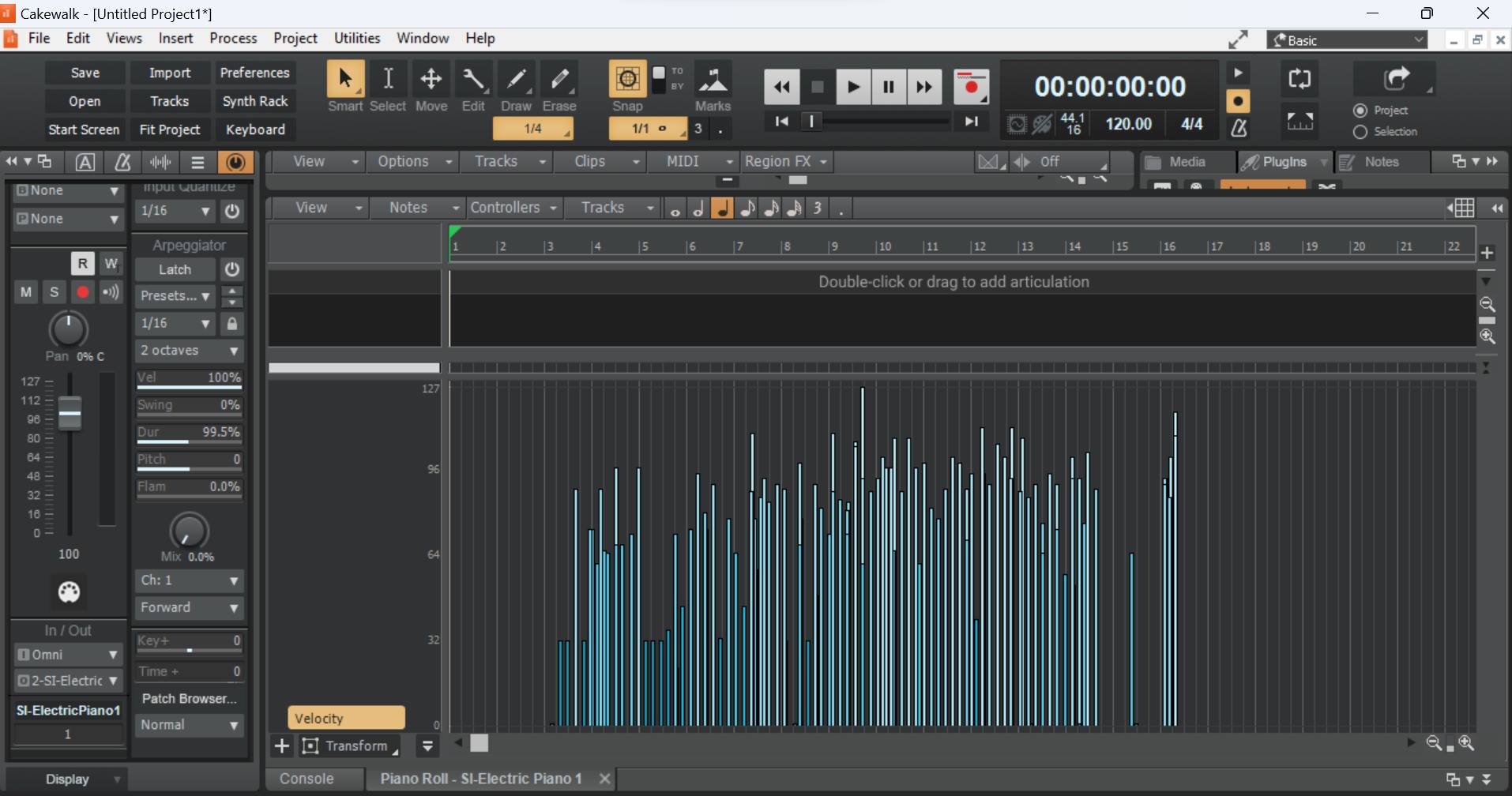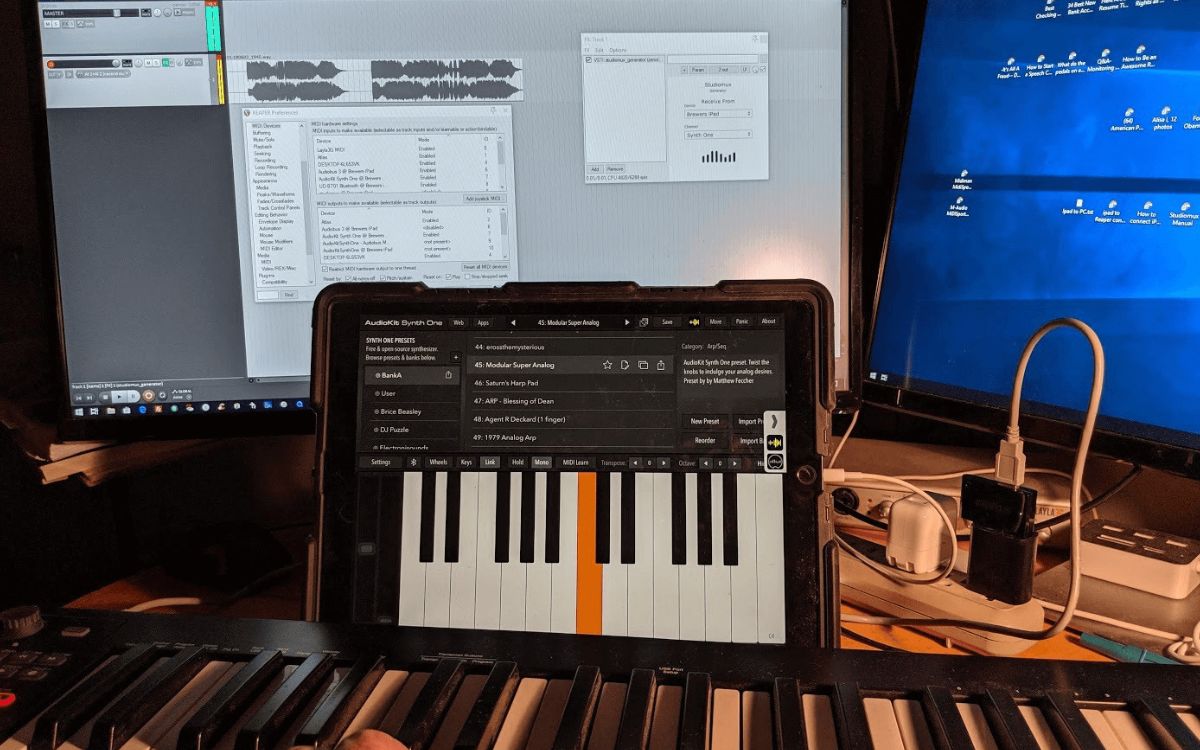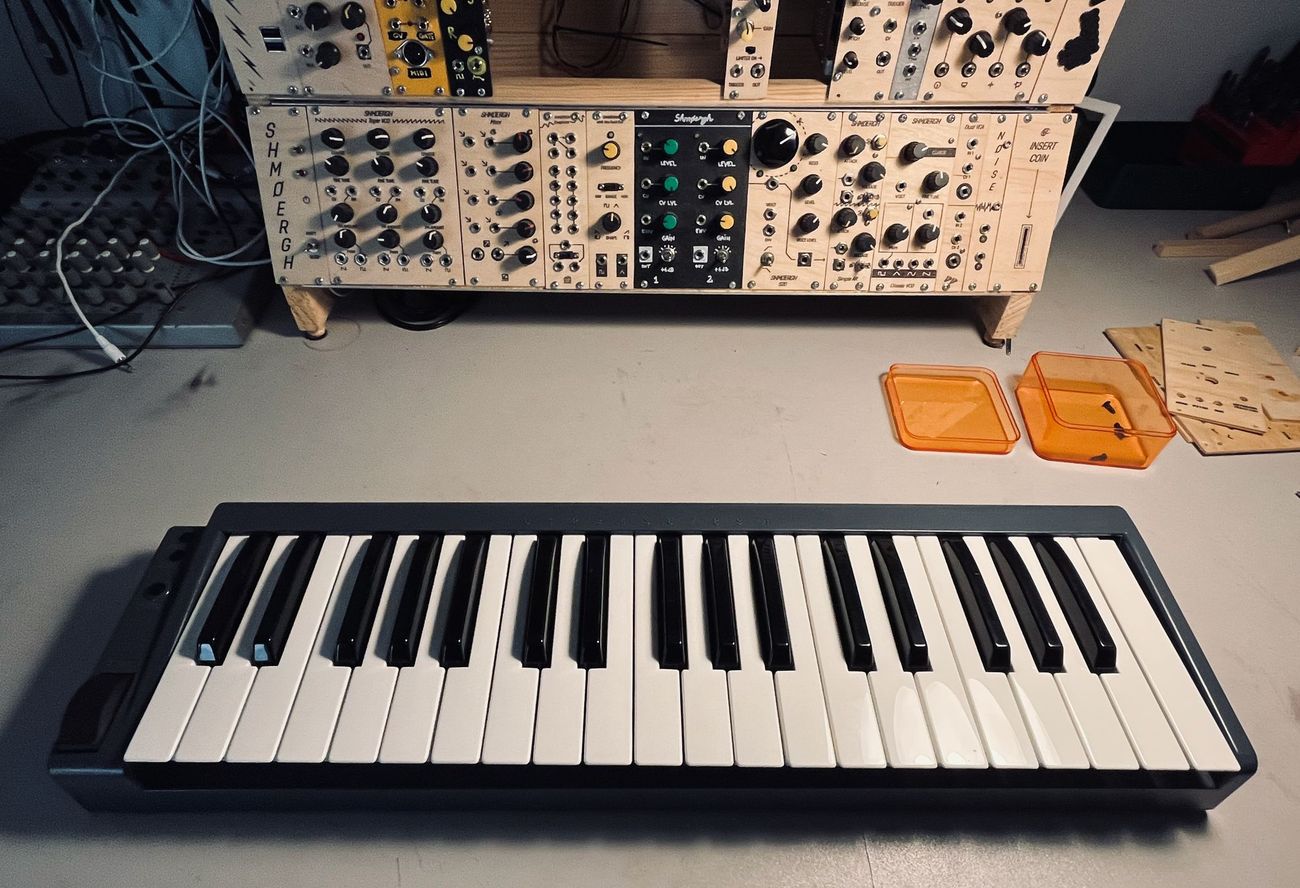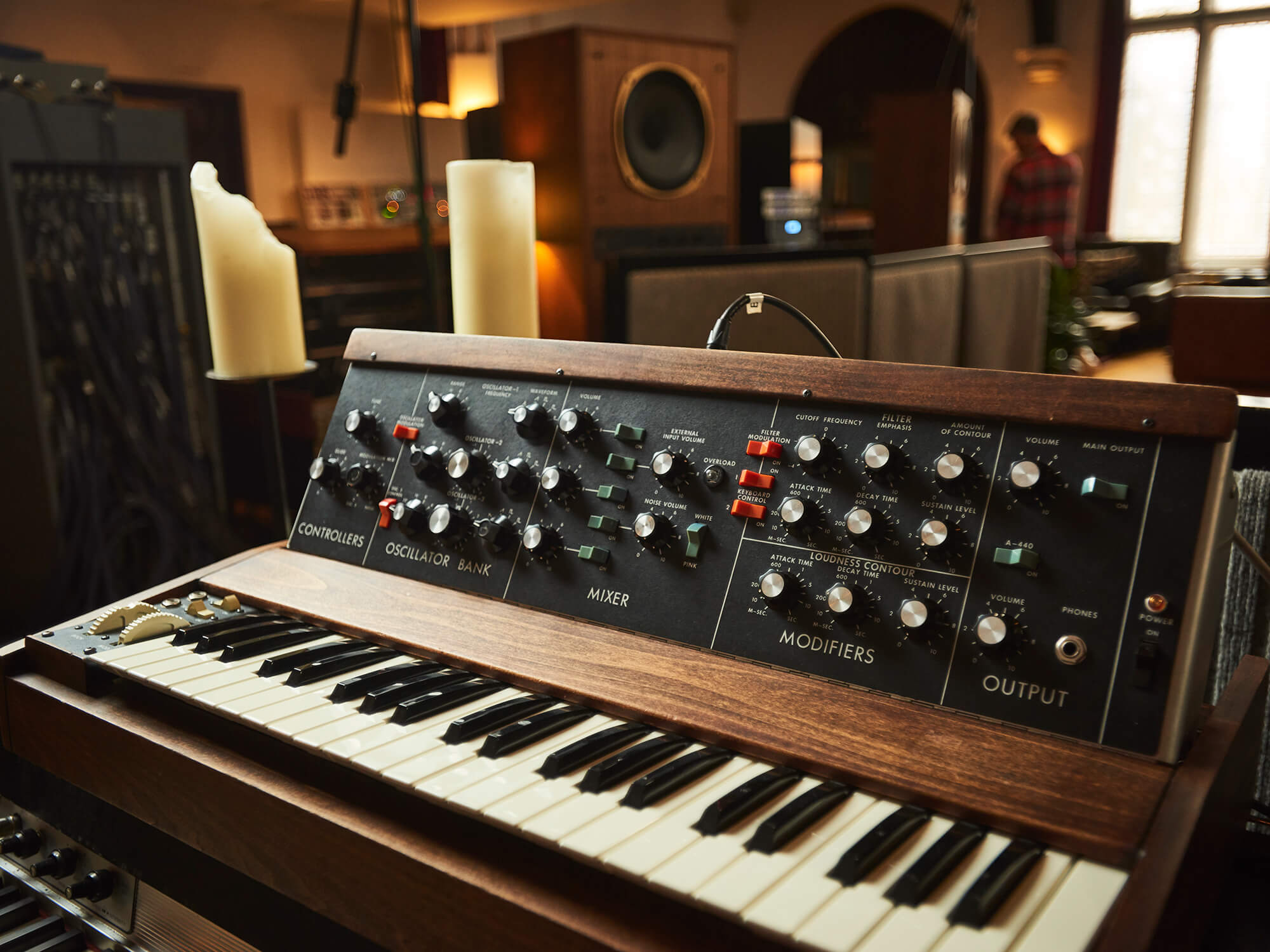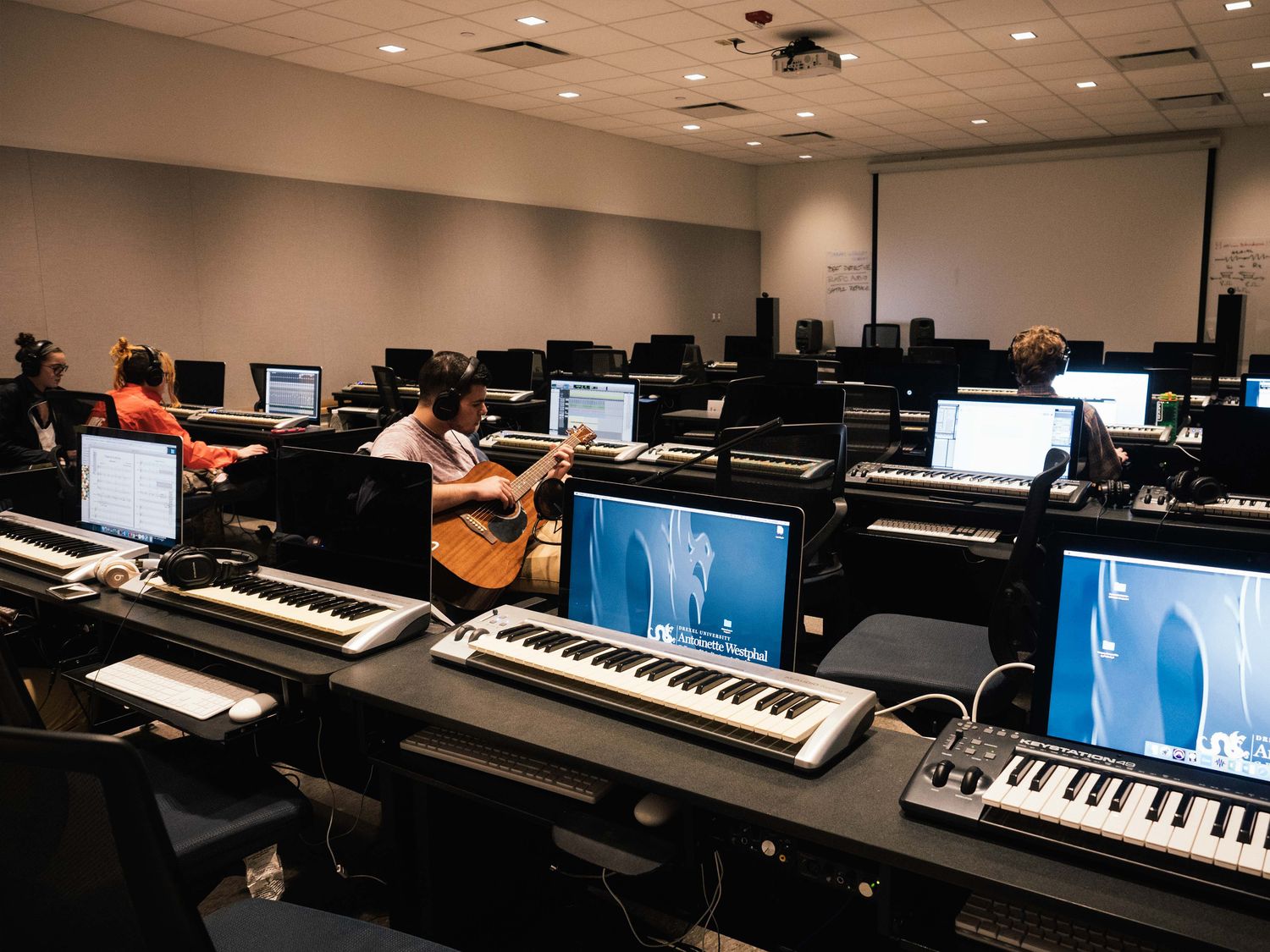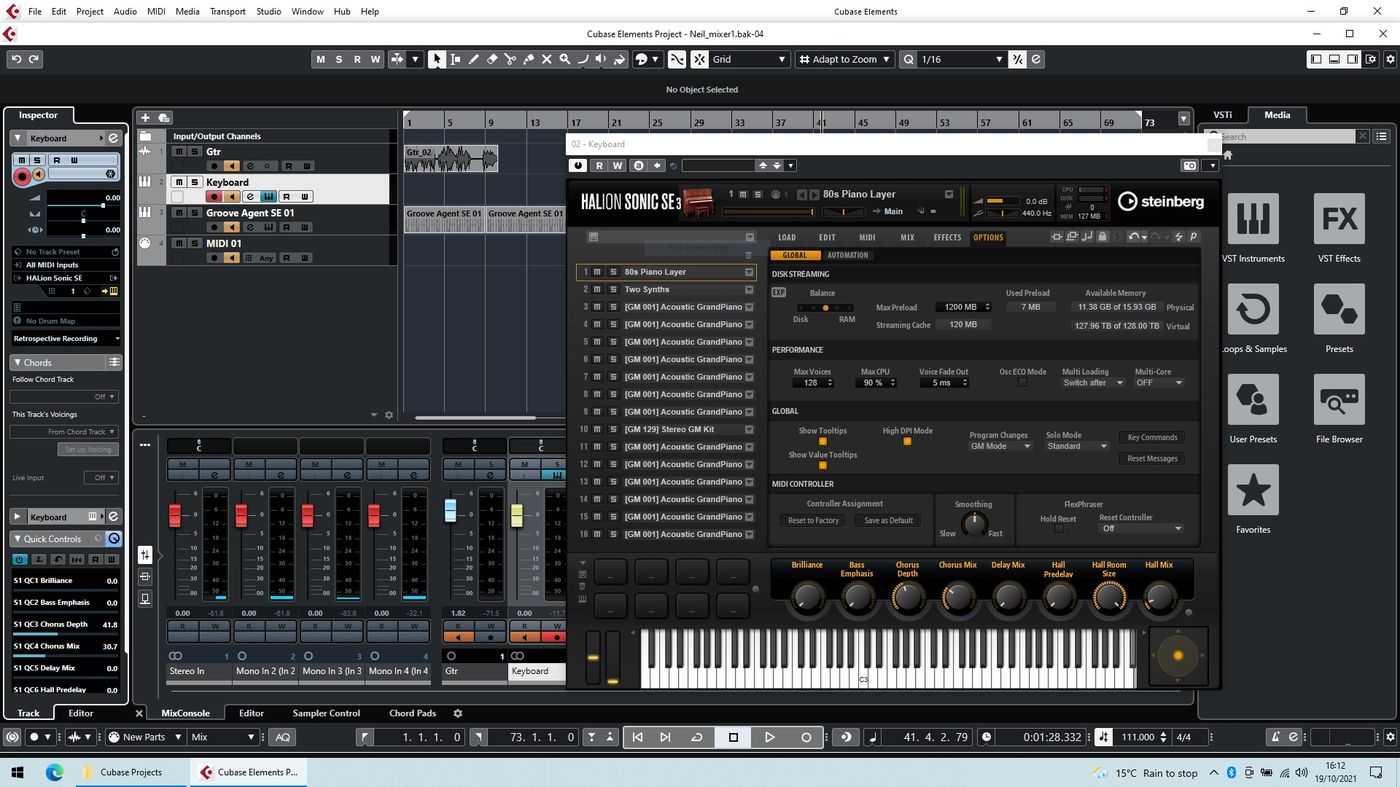Home>Production & Technology>MIDI>How To Use MIDI With Analog Synth
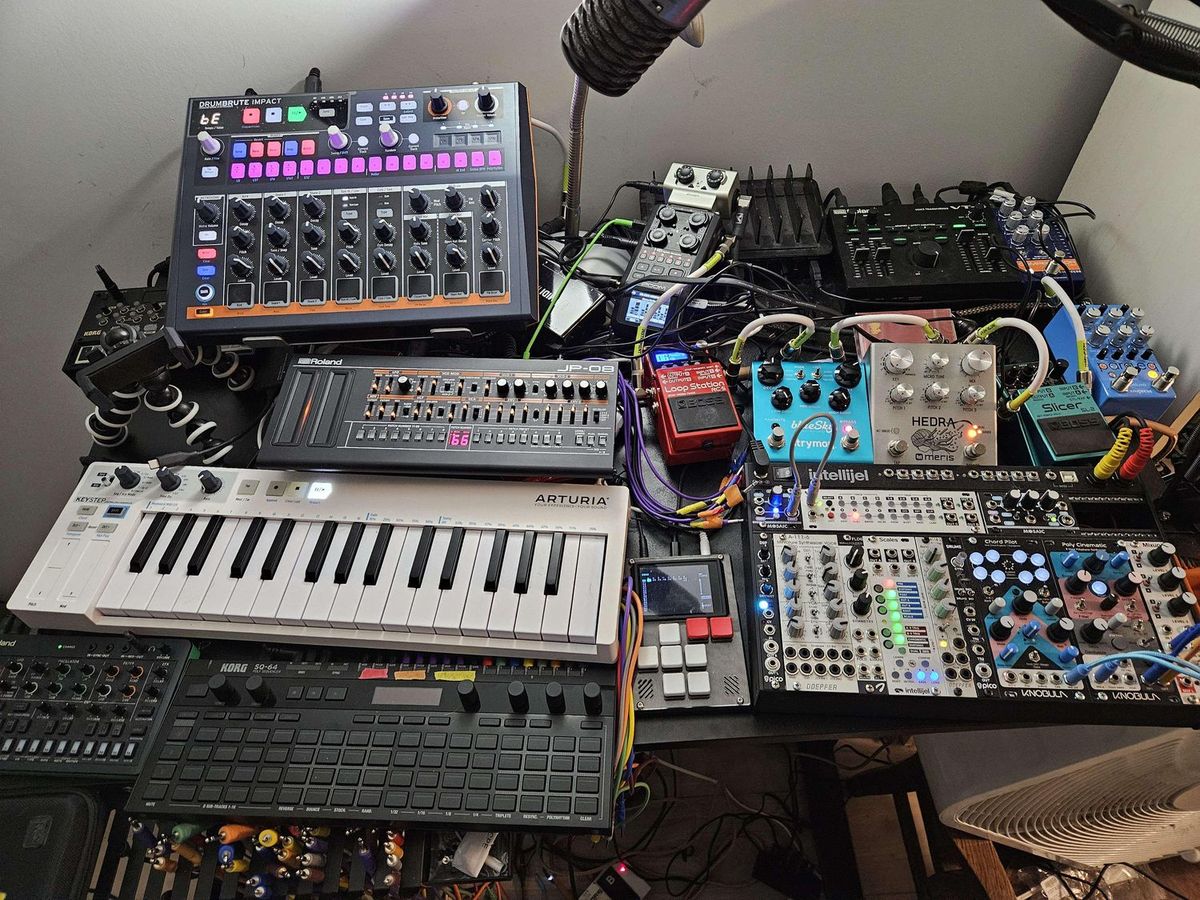

MIDI
How To Use MIDI With Analog Synth
Published: February 22, 2024
Learn how to integrate MIDI with analog synths for seamless music production. Discover the power of MIDI control and synchronization with your favorite analog synthesizers. Unlock new creative possibilities with MIDI and analog synth integration.
(Many of the links in this article redirect to a specific reviewed product. Your purchase of these products through affiliate links helps to generate commission for AudioLover.com, at no extra cost. Learn more)
Table of Contents
Introduction
MIDI, which stands for Musical Instrument Digital Interface, has revolutionized the way musicians create and manipulate sounds. It is a universal language that allows electronic musical instruments, computers, and other audio devices to communicate and synchronize with each other. In the world of music production, MIDI enables seamless integration between different pieces of equipment, offering unparalleled flexibility and control.
In this article, we will delve into the fascinating realm of MIDI and explore how it can be used in conjunction with analog synthesizers. Analog synthesizers, known for their warm and organic sound, have experienced a resurgence in popularity in recent years. By harnessing the power of MIDI, musicians can unlock a myriad of creative possibilities while retaining the unique sonic character of analog synthesis.
Throughout this guide, we will uncover the intricacies of MIDI, from understanding its fundamental principles to harnessing its potential to control and manipulate analog synthesizers. Whether you are a seasoned producer or a novice enthusiast, this article aims to demystify the integration of MIDI with analog synthesizers, empowering you to elevate your musical endeavors to new heights.
Join us on this exploration of MIDI and analog synthesis as we unravel the magic of connectivity, creativity, and sonic expression. Let's embark on a journey to unlock the boundless potential that MIDI offers in shaping the captivating world of analog synthesis.
Understanding MIDI
At its core, MIDI serves as a versatile communication protocol that enables electronic musical instruments, computers, and other hardware to interact harmoniously. Unlike audio signals, MIDI data does not carry sound itself; instead, it conveys a wide array of musical information, including note pitches, velocity, modulation, and control signals. This digital language operates independently of audio signals, empowering musicians and producers to manipulate and control various parameters of electronic instruments with exceptional precision.
MIDI data is transmitted in a serial fashion, utilizing a standardized format that ensures compatibility across a diverse range of musical equipment. The communication occurs through MIDI messages, which consist of a series of digital instructions that convey specific musical actions. These messages can convey a multitude of commands, such as note-on and note-off messages, pitch bend, modulation, and control change messages, among others.
One of the defining features of MIDI is its non-destructive nature, allowing for seamless editing and manipulation of musical data without compromising the original audio recordings. This inherent flexibility has made MIDI an indispensable tool in modern music production, enabling artists to refine compositions, experiment with different sounds, and fine-tune performances with unparalleled ease.
Furthermore, MIDI operates on a channel-based system, with each MIDI channel capable of transmitting independent streams of musical data. This channelization facilitates the creation of intricate musical arrangements, as different instruments and sound modules can be assigned to distinct MIDI channels, granting the user full control over each element of the composition.
In addition to its role in musical performance and composition, MIDI also extends its influence to live performances, lighting control, and multimedia presentations, showcasing its versatility beyond the realm of music production. With its ability to synchronize various audiovisual elements, MIDI stands as a cornerstone of modern multimedia integration, enriching the sensory experiences of audiences worldwide.
In essence, MIDI serves as the connective tissue that binds together the diverse landscape of electronic musical instruments and audio technology. Its universal compatibility, expressive capabilities, and non-destructive nature have solidified its status as an indispensable tool for musicians, producers, and audio enthusiasts alike. As we continue our exploration, we will delve deeper into the practical application of MIDI in tandem with analog synthesizers, unlocking a realm of creative possibilities that transcend the boundaries of traditional sound synthesis.
Connecting MIDI to Analog Synth
Connecting MIDI to an analog synthesizer opens a gateway to a world of sonic exploration and creative manipulation. Analog synthesizers, renowned for their rich and organic sound, have experienced a resurgence in popularity, drawing musicians and producers to their warm and distinctive sonic character. By integrating MIDI with analog synthesizers, users can harness the expressive power of MIDI while retaining the unique tonal qualities of analog synthesis.
The process of connecting MIDI to an analog synthesizer involves establishing a seamless communication link between the MIDI controller or workstation and the analog synth. This connection is typically achieved through MIDI cables, which transmit the digital MIDI data from the controller to the synthesizer. Most analog synthesizers feature MIDI input ports, allowing for direct integration with external MIDI devices.
To initiate the connection, a standard MIDI cable is utilized to link the MIDI output of the controller or workstation to the MIDI input of the analog synthesizer. This straightforward physical connection serves as the conduit through which MIDI messages are transmitted, enabling the controller to communicate with and exert control over the analog synth.
Furthermore, the MIDI connection facilitates the synchronization of tempo and timing between the controller and the analog synthesizer, ensuring seamless integration within a musical arrangement. This synchronization capability empowers users to effortlessly incorporate the distinctive analog sounds into their MIDI-based compositions, bridging the realms of classic analog synthesis and modern digital production techniques.
Moreover, the integration of MIDI with analog synthesizers unlocks a plethora of creative possibilities, allowing for real-time manipulation of sound parameters, such as filter cutoff, resonance, envelope settings, and modulation sources. This dynamic interaction enables musicians and producers to infuse their compositions with the expressive nuances and sonic textures that are emblematic of analog synthesis.
By establishing a robust MIDI connection with analog synthesizers, users can transcend the confines of traditional sound generation, embracing a fusion of vintage warmth and contemporary control. This harmonious integration empowers artists to sculpt captivating sonic landscapes, fusing the timeless allure of analog synthesis with the boundless potential of MIDI-driven creativity.
In the next section, we will delve into the intricacies of sending MIDI messages to an analog synthesizer and explore the transformative impact of MIDI control on shaping the sonic character of analog synthesis. Join us as we embark on a journey to unravel the captivating synergy between MIDI and analog synthesis, unlocking a realm of sonic expression and creative innovation.
Sending MIDI Messages to Analog Synth
Sending MIDI messages to an analog synthesizer represents a pivotal step in harnessing the expressive power of MIDI to shape the sonic landscape of analog synthesis. Through the seamless transmission of MIDI data, musicians and producers can exert precise control over a myriad of parameters within the analog synth, infusing their compositions with dynamic textures and captivating timbres.
At the heart of this process lies the intricate interplay between the MIDI controller or workstation and the analog synthesizer. As MIDI messages are dispatched from the controller, they traverse the MIDI cable, traversing the digital realm to reach the awaiting analog synth. Upon arrival, these messages serve as directives, commanding the analog synth to execute specific musical actions, ranging from triggering notes to modulating sound parameters.
One of the fundamental MIDI messages employed in this context is the "note-on" message, which signals the initiation of a musical note. When dispatched to the analog synthesizer, this message prompts the generation of the corresponding pitch, allowing users to craft melodic sequences and intricate musical phrases with precision and finesse. Furthermore, the "note-off" message serves as the counterpart, signaling the cessation of a note's sound, thereby enabling seamless control over the duration and articulation of musical passages.
In addition to note-based messages, MIDI facilitates the transmission of control change messages, which enable users to modulate a diverse array of parameters within the analog synthesizer. From manipulating filter cutoff frequencies to adjusting envelope settings and modulation depths, these control change messages empower musicians and producers to sculpt the sonic character of the analog synth in real time, imbuing their compositions with expressive nuances and captivating tonal shifts.
Moreover, MIDI messages can convey pitch bend and modulation data, allowing for fluid and emotive manipulation of the sound's pitch and timbral qualities. This dynamic interaction between MIDI and analog synthesis fosters a symbiotic relationship, wherein the digital precision of MIDI harmoniously coalesces with the organic warmth of analog sound generation, yielding a sonic tapestry that transcends the boundaries of traditional synthesis methods.
By leveraging MIDI messages to communicate with analog synthesizers, artists can harness the full spectrum of expressive potential, seamlessly integrating the timeless allure of analog sound with the precision and versatility of MIDI control. This convergence of technologies engenders a realm of creative exploration, where the boundaries of sonic expression are continually expanded, and the art of music production is elevated to new heights.
As we navigate the intricate landscape of MIDI integration with analog synthesizers, the synergy between digital precision and analog warmth emerges as a testament to the transformative power of technology in shaping the sonic fabric of musical compositions. Join us in the next section as we delve into the art of using MIDI to control parameters within the analog synthesizer, unraveling the intricate dance between digital command and analog response in the realm of sonic creativity.
Using MIDI to Control Analog Synth Parameters
Harnessing the power of MIDI to control analog synth parameters represents a transformative endeavor that empowers musicians and producers to sculpt captivating sonic landscapes with unparalleled precision and finesse. Through the seamless integration of MIDI control, users can exert dynamic influence over a myriad of sound-shaping parameters within the analog synthesizer, unlocking a realm of creative potential that transcends the confines of traditional synthesis methods.
One of the fundamental avenues through which MIDI facilitates parameter control is the transmission of control change messages. These messages serve as conduits through which users can manipulate a diverse array of parameters within the analog synth, including filter cutoff frequencies, resonance levels, envelope settings, and modulation depths. By dispatching control change messages, musicians can dynamically modulate these parameters in real time, infusing their compositions with expressive nuances and captivating tonal shifts that breathe life into their sonic creations.
Furthermore, MIDI empowers users to leverage continuous controller messages to exert nuanced control over specific parameters, enabling seamless manipulation of sonic characteristics such as vibrato depth, tremolo speed, and other modulatory elements. This granular level of control fosters an environment of expressive freedom, allowing artists to imbue their compositions with emotive textures and dynamic fluctuations that resonate with depth and authenticity.
In addition to control change messages, MIDI facilitates the transmission of program change messages, enabling users to seamlessly switch between different presets and sound patches within the analog synthesizer. This capability provides a fluid and dynamic means of navigating through diverse sonic palettes, allowing for seamless transitions between distinct tonal textures and timbral variations, thereby enhancing the sonic versatility and creative adaptability of the analog synth within a musical composition.
Moreover, MIDI offers the capacity to synchronize tempo and timing information between the MIDI controller and the analog synthesizer, ensuring cohesive integration within a musical arrangement. This synchronization capability enables users to seamlessly align the rhythmic elements of their compositions, fostering a harmonious interplay between the digital precision of MIDI control and the organic warmth of analog sound generation.
By leveraging MIDI to control analog synth parameters, artists can transcend the boundaries of traditional sound manipulation, embracing a fusion of vintage warmth and contemporary precision. This harmonious integration empowers musicians and producers to shape captivating sonic narratives, harnessing the expressive potential of MIDI to breathe life into the timeless allure of analog synthesis.
As we navigate the intricate landscape of MIDI integration with analog synthesizers, the synergy between digital precision and analog warmth emerges as a testament to the transformative power of technology in shaping the sonic fabric of musical compositions. Join us in the next section as we delve into the art of using MIDI to control parameters within the analog synthesizer, unraveling the intricate dance between digital command and analog response in the realm of sonic creativity.
Conclusion
In conclusion, the integration of MIDI with analog synthesizers heralds a new era of sonic exploration and creative innovation. Through the harmonious marriage of digital precision and analog warmth, musicians and producers can unlock a realm of expressive potential that transcends the confines of traditional synthesis methods. The seamless transmission of MIDI messages empowers users to exert dynamic control over a myriad of parameters within the analog synth, infusing compositions with captivating timbres and emotive textures.
As we journeyed through the intricacies of MIDI integration with analog synthesizers, we unveiled the transformative impact of MIDI control on shaping the sonic character of analog synthesis. From establishing robust MIDI connections to seamlessly sending MIDI messages and leveraging MIDI to control analog synth parameters, we delved into the symbiotic relationship between digital command and analog response, witnessing the convergence of technologies in shaping the sonic fabric of musical compositions.
The fusion of vintage warmth and contemporary precision, facilitated by MIDI integration, empowers artists to sculpt captivating sonic landscapes, breathing life into their musical visions with unparalleled finesse. The expressive potential of MIDI control extends beyond conventional boundaries, fostering an environment of creative exploration where the art of music production is elevated to new heights.
In essence, the synergy between MIDI and analog synthesis stands as a testament to the transformative power of technology in the realm of sonic creativity. As the timeless allure of analog sound converges with the boundless potential of MIDI-driven control, a new chapter in musical expression unfolds, marked by innovation, versatility, and the seamless fusion of digital and analog realms.
The journey of MIDI and analog synthesis is a testament to the enduring spirit of creativity and the ever-evolving landscape of musical innovation. As we continue to embrace the possibilities that MIDI integration offers, we embark on a boundless voyage of sonic exploration, where the expressive potential of analog synthesis converges with the precision of MIDI control, shaping the future of musical expression with unwavering creativity and boundless imagination.

